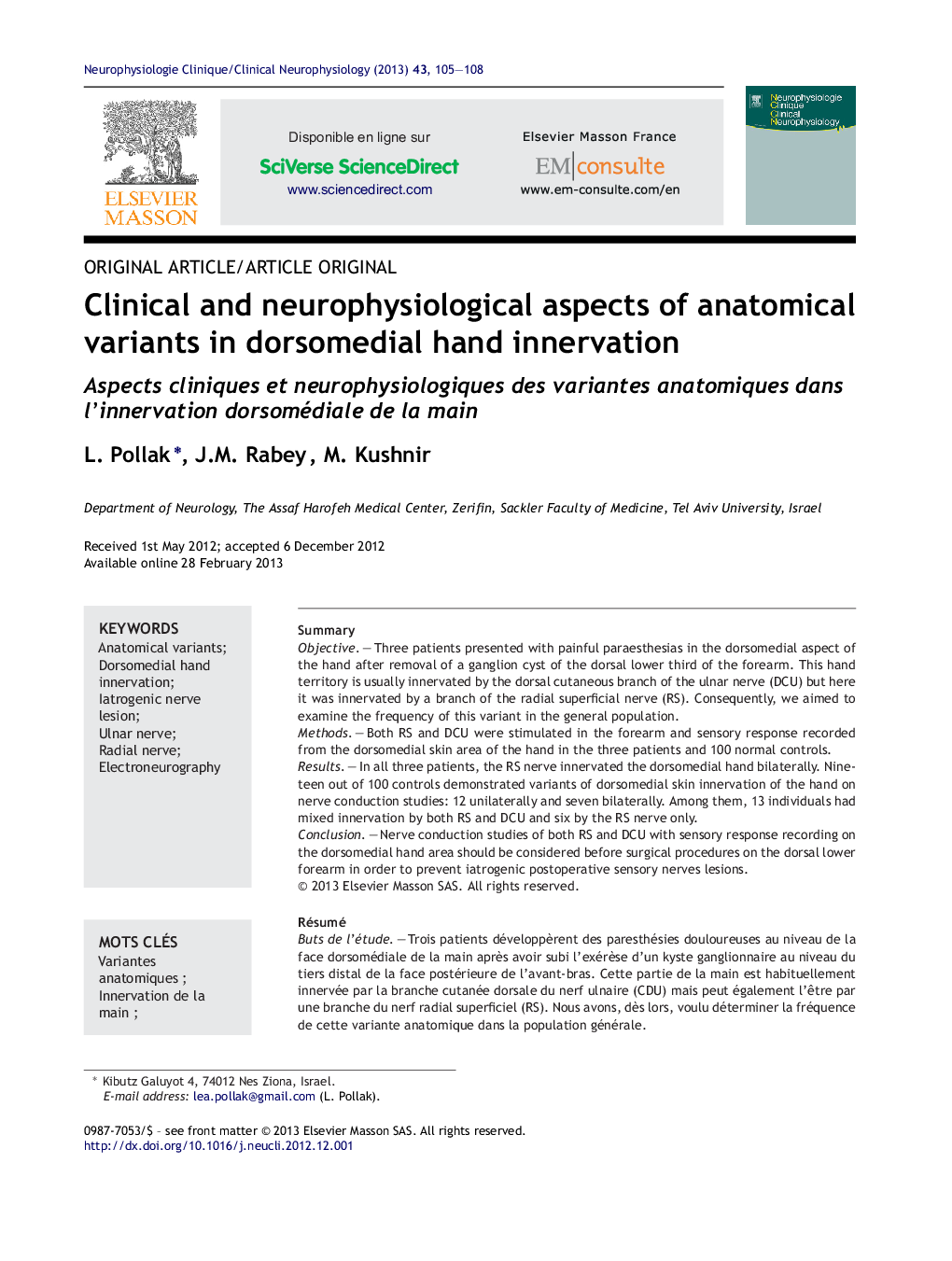| Article ID | Journal | Published Year | Pages | File Type |
|---|---|---|---|---|
| 3082460 | Neurophysiologie Clinique/Clinical Neurophysiology | 2013 | 4 Pages |
SummaryObjectiveThree patients presented with painful paraesthesias in the dorsomedial aspect of the hand after removal of a ganglion cyst of the dorsal lower third of the forearm. This hand territory is usually innervated by the dorsal cutaneous branch of the ulnar nerve (DCU) but here it was innervated by a branch of the radial superficial nerve (RS). Consequently, we aimed to examine the frequency of this variant in the general population.MethodsBoth RS and DCU were stimulated in the forearm and sensory response recorded from the dorsomedial skin area of the hand in the three patients and 100 normal controls.ResultsIn all three patients, the RS nerve innervated the dorsomedial hand bilaterally. Nineteen out of 100 controls demonstrated variants of dorsomedial skin innervation of the hand on nerve conduction studies: 12 unilaterally and seven bilaterally. Among them, 13 individuals had mixed innervation by both RS and DCU and six by the RS nerve only.ConclusionNerve conduction studies of both RS and DCU with sensory response recording on the dorsomedial hand area should be considered before surgical procedures on the dorsal lower forearm in order to prevent iatrogenic postoperative sensory nerves lesions.
RésuméButs de l’étudeTrois patients développèrent des paresthésies douloureuses au niveau de la face dorsomédiale de la main après avoir subi l’exérèse d’un kyste ganglionnaire au niveau du tiers distal de la face postérieure de l’avant-bras. Cette partie de la main est habituellement innervée par la branche cutanée dorsale du nerf ulnaire (CDU) mais peut également l’être par une branche du nerf radial superficiel (RS). Nous avons, dès lors, voulu déterminer la fréquence de cette variante anatomique dans la population générale.MéthodesNous avons stimulé les branches DCU et RS au niveau de l’avant-bras et recueilli les réponses sensitives antidromiques de la face dorsale de la main chez les trois patients et 100 sujets normaux.RésultatsChez les trois patients, la face dorsomédiale de la main était innervée bilatéralement par la branche RS. Notre étude neurographique montra une innervation atypique chez 19 des 100 sujets contrôle, unilatéralement chez 12 sujets et bilatéralement chez sept. Chez 13 sujets, l’innervation de la face dorsomédiale de la main était assurée à la fois par la DCU et la RS alors que chez six sujets, elle ne dépendait que de la RS.ConclusionUne étude neurographique de l’innervation sensitive de la main portant à la fois sur les branches DCU et RS est souhaitable si l’on veut prévenir des lésions nerveuses iatrogènes induites par la chirurgie de la face postérieure de l’avant-bras.
